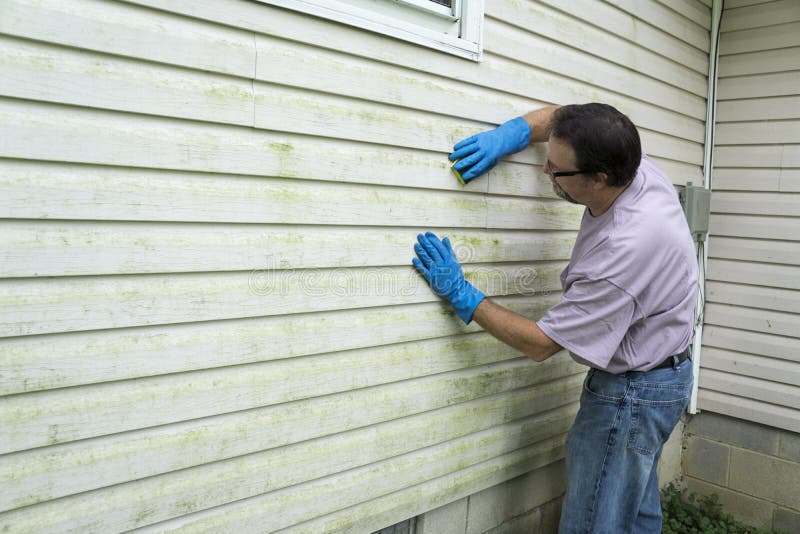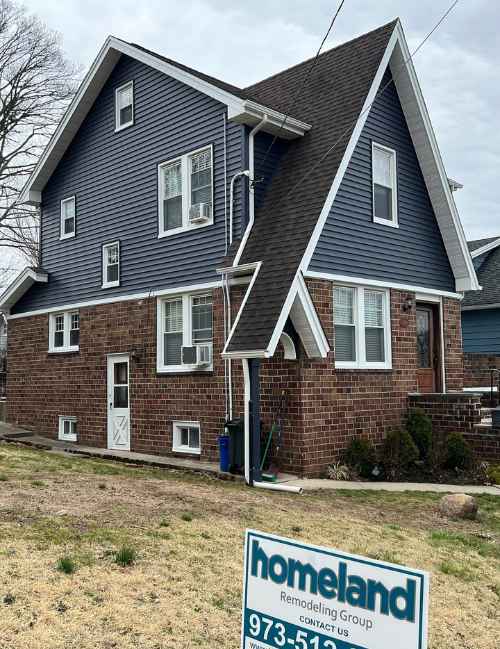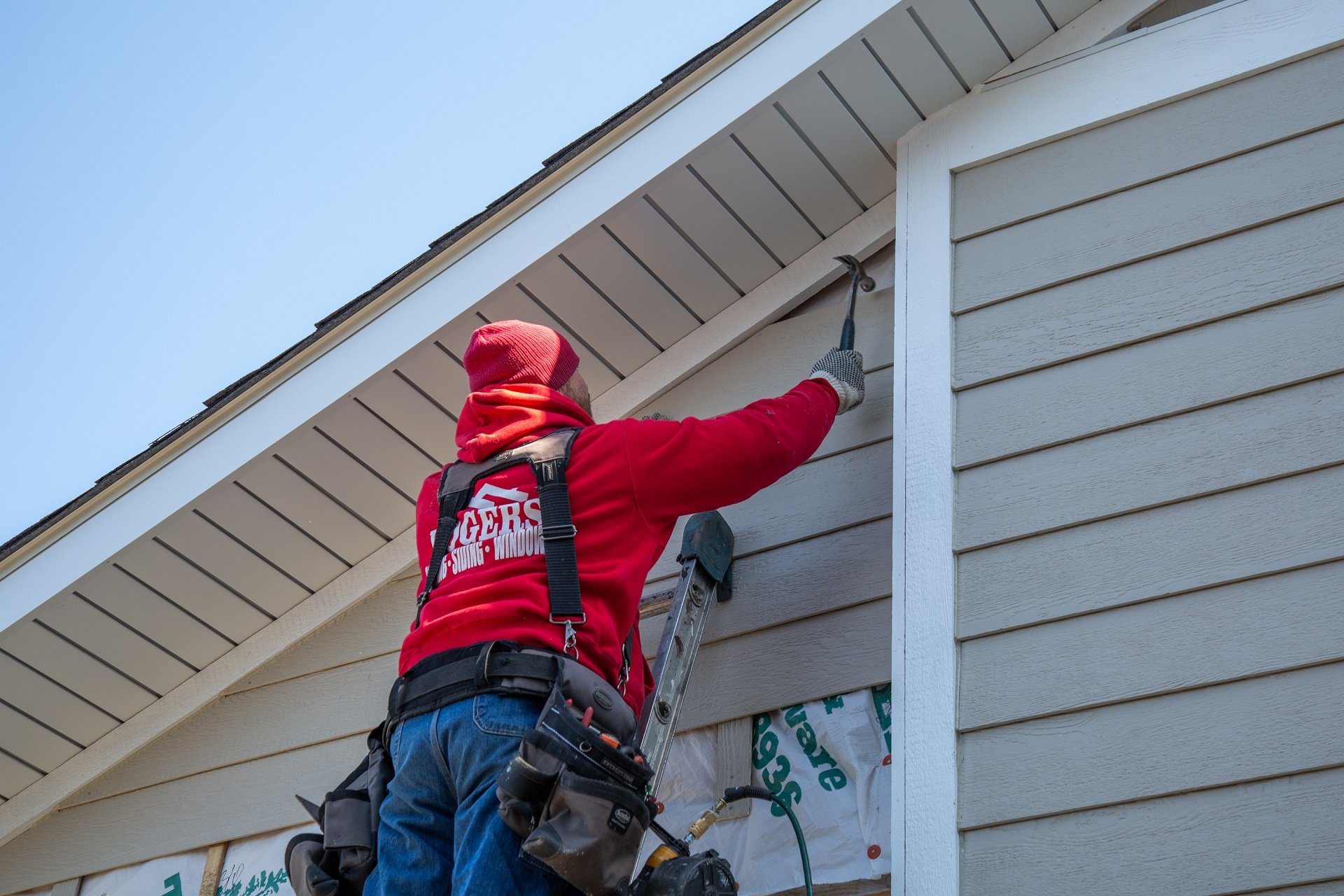Superior Morris Siding Contractor with Comprehensive Siding Services
Superior Morris Siding Contractor with Comprehensive Siding Services
Blog Article
The Necessary Guide to the Numerous Types of Home Siding and Their Unique Advantages
In the world of home improvement, choosing the ideal siding is a vital choice that impacts both visual appeal and useful performance. With so lots of options to take into consideration, which siding material really stands out for your details task?
Wood Home Siding
Timber exterior siding, a popular choice for residential exteriors, uses an ageless aesthetic that integrates natural beauty with architectural stability. This exterior siding material is readily available in numerous styles, including clapboard, tiles, and board-and-batten, permitting house owners to personalize their façade to match their design choices. Wood siding is typically crafted from sturdy types such as cedar, redwood, or yearn, which are known for their strength and capability to hold up against ecological stressors.
One of the key advantages of wood siding is its excellent insulation residential properties, which can add to power performance and lower home heating expenses. Additionally, timber siding is naturally degradable, making it an eco-friendly alternative when sourced sustainably. Normal upkeep, including paint or discoloration, can lengthen its lifespan and boost its appearance, allowing house owners to protect the all-natural beauty of the wood.
However, possible downsides include vulnerability to bugs, rot, and climate damages, necessitating appropriate therapy and upkeep - morris siding contractor. In spite of these issues, when effectively looked after, timber siding can offer a durable and stunning remedy that enhances the character of a home while supplying a warm, inviting atmosphere

Plastic Siding
Plastic home siding has become a leading choice for home owners looking for a low-maintenance outside option that incorporates resilience and affordability. This versatile material is crafted from polyvinyl chloride (PVC), making it resistant to various weather, consisting of dampness and UV rays. As an outcome, plastic siding does not warp, rot, or fade, making certain long-lasting visual charm.
Among the key advantages of plastic home siding is its considerable variety of colors and designs, permitting homeowners to accomplish the wanted look for their residential or commercial property without the demand for frequent repainting. Furthermore, plastic siding is easy to set up, which can significantly decrease labor expenses throughout construction or remodelling jobs.
Plastic siding also adds to power performance. Many options function insulation backing, which improves thermal efficiency, aiding to keep comfortable indoor temperature levels and possibly decreasing energy bills. In addition, its smooth surface helps with simple cleansing, calling for just regular cleaning with a yard hose to eliminate dust and particles.
Fiber Cement Siding
Fiber cement siding has gained grip amongst home owners and contractors alike as a result of its remarkable mix of durability and aesthetic versatility. Composed of a mixture of cement, cellulose, and sand fibers, this house siding choice is engineered to endure extreme climate condition, including high winds, heavy rainfall, and temperature level changes, making it a lasting option for domestic exteriors.

One of the key advantages of fiber cement exterior siding is its resistance to pests, such as termites, and its non-combustible nature, offering enhanced fire safety and security. morris siding contractor. Furthermore, it is available in a wide selection of styles, shades, and structures, permitting homeowners to achieve their wanted aesthetic without compromising efficiency
An additional benefit is its reduced maintenance demands; fiber concrete exterior siding usually needs paint or staining every 5-10 years, which is less regular than various other products. Its durability adds to a reduced total useful content price of possession, as it reduces the need for regular repair work or substitutes.
Inevitably, fiber concrete siding represents an exceptional financial investment for those looking for a resistant, attractive, and versatile exterior option, combining both form and function to enhance the home's visual charm.
Metal Exterior Siding
The appeal of metal exterior siding hinges on its robust longevity and modern visual allure, making it a popular selection for modern design. Readily available in products such as aluminum and steel, metal house siding offers a variety of finishes and shades, permitting home owners to attain a tailored appearance that enhances their style vision.

Energy efficiency is an additional significant advantage, as many metal siding products are designed with insulation options that help control interior temperature levels. This can bring about lowered power expenses gradually. Furthermore, metal home siding is commonly recyclable, making it an eco pleasant option for sustainability-minded property owners.
The setup process for steel exterior siding can be fairly simple, resulting in a official website quicker turn-around time for building and construction tasks. Generally, metal siding integrates performance and style, making it a useful option for those looking for a enduring and visually enticing exterior coating.
Brick and Stone House Siding
Brick and stone exterior siding stands apart as a classic selection that enhances the visual appeal of any home. Recognized for their longevity and low upkeep, these products provide a remarkable roi while raising the residential property's visual allure. Offered in various shades, textures, and patterns, brick and rock can be tailored to match diverse building designs, from conventional to modern-day.
One of the main benefits of brick and rock siding is their energy effectiveness. Both materials have natural shielding properties that help control interior temperature levels, possibly decreasing heating & cooling costs. Furthermore, they use premium fire resistance compared to other exterior siding options, adding to boosted safety and security.
Another benefit is their durability. Brick and stone can last for decades, frequently needing marginal maintenance past periodic cleansing. Unlike timber house siding, they are impervious to bugs and rot, ensuring a long-lasting exterior that endures the elements.
Conclusion
In summary, the selection of exterior siding significantly affects a home's aesthetic check it out appeal, energy efficiency, and upkeep needs. Each kind of home siding-- whether timber, plastic, fiber concrete, steel, or block and rock-- uses unique advantages customized to different property owner preferences and ecological conditions. Understanding these options enables informed decisions that enhance both the sturdiness and visual charm of household outsides. Ultimately, picking the ideal home siding is vital for achieving an equilibrium between functionality and layout in domestic architecture.
One of the key benefits of timber home siding is its excellent insulation buildings, which can contribute to power efficiency and reduced home heating expenses. In addition, wood house siding is biodegradable, making it an ecologically pleasant option when sourced sustainably.One of the key benefits of steel exterior siding is its resistance to numerous environmental factors.Power effectiveness is another substantial benefit, as numerous metal siding items are designed with insulation choices that assist regulate interior temperatures. Each type of house siding-- whether wood, vinyl, fiber concrete, metal, or block and stone-- supplies special benefits customized to different homeowner choices and ecological problems.
Report this page